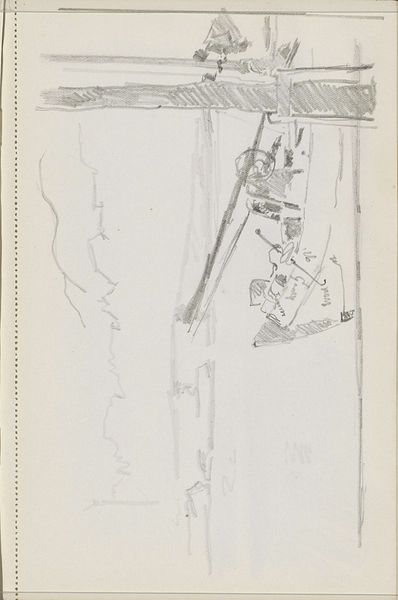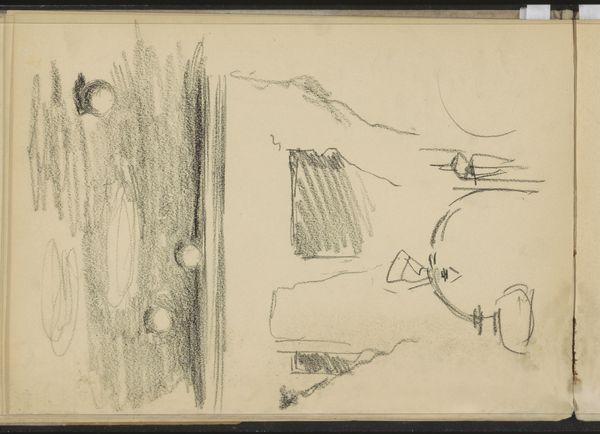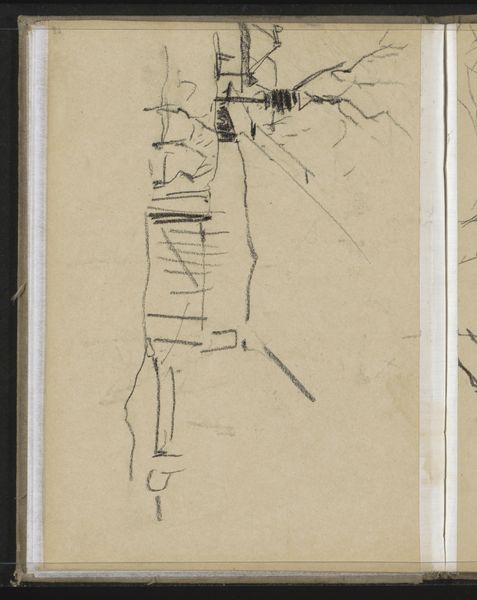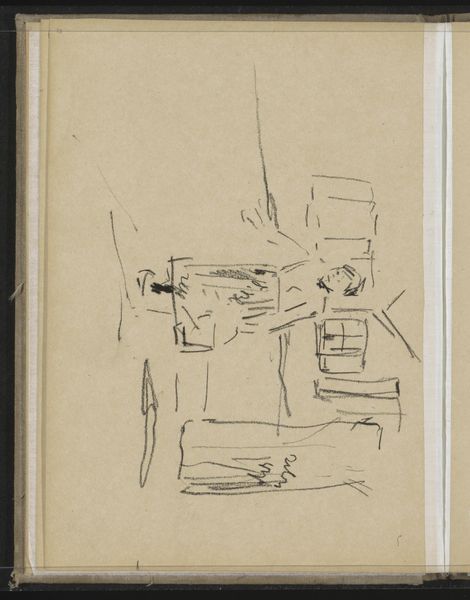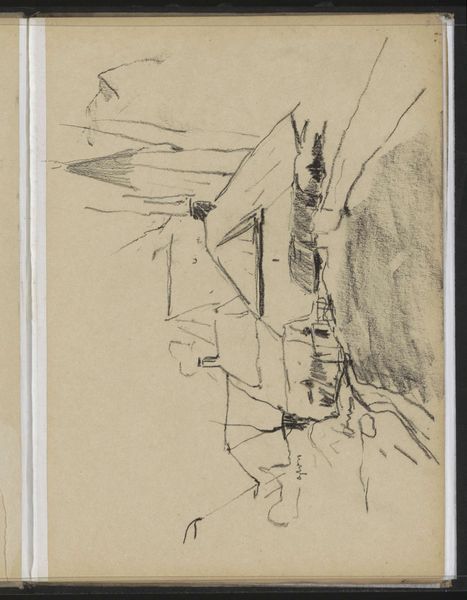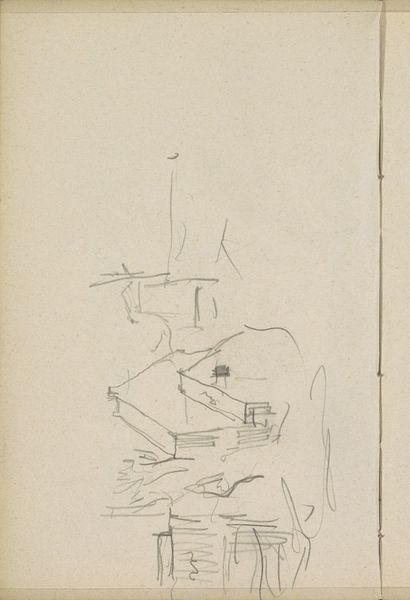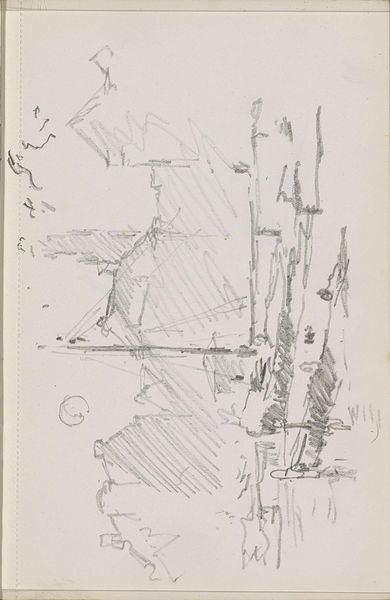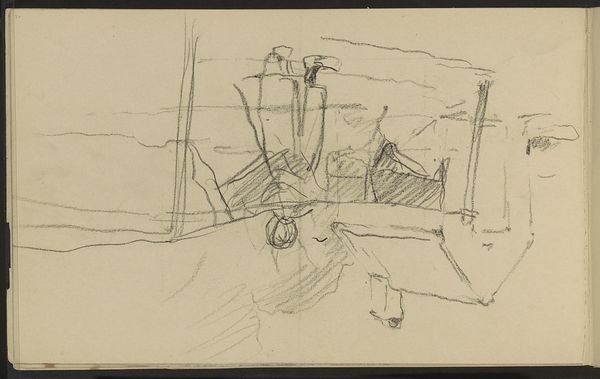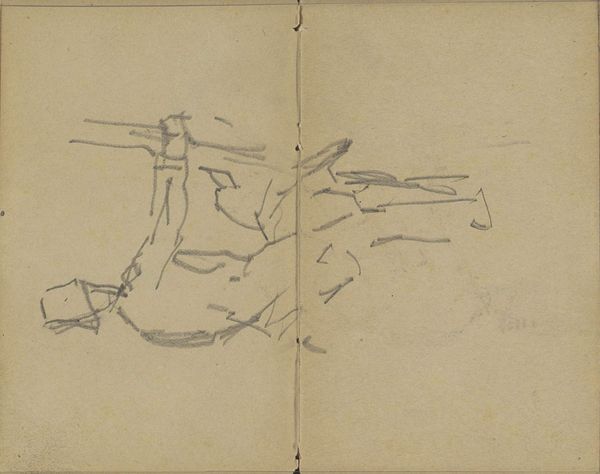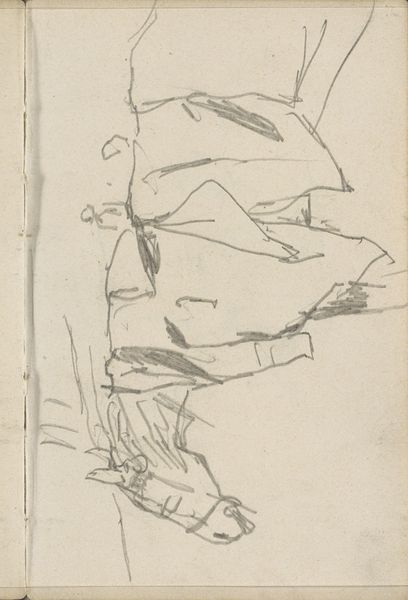
#
tree
#
imaginative character sketch
#
toned paper
#
quirky sketch
#
sketch book
#
incomplete sketchy
#
personal sketchbook
#
ink drawing experimentation
#
pen-ink sketch
#
sketchbook drawing
#
sketchbook art
Copyright: Rijks Museum: Open Domain
Curator: Immediately, I see a sense of vulnerability, almost melancholic, in this wispy, linear sketch. The barest of ink lines against a soft beige paper creates this quiet impression. Editor: This is "Gezicht op boerderijen te Ede" which roughly translates to "View of farms in Ede". Willem Witsen rendered this pen-and-ink drawing sometime between 1893 and 1897, capturing a fleeting moment. It resides here at the Rijksmuseum. Curator: "Fleeting" is the exact word I'd use. See how little is defined. These aren't idealized, picturesque farms, are they? They seem almost to hover. Editor: The sketch style aligns with a growing sentiment in late 19th-century Dutch art. There was a burgeoning desire to reflect a modernizing world, but not always through grand, heroic narratives. Witsen, who was part of the "Amsterdam Impressionism" movement, found value in understated scenes. Curator: The lack of detail directs the viewer. Rather than getting caught up in specifics, we get the essence, almost the psychological trace of the landscape. I can sense the damp air, the low, gray skies so common in that region. The bareness carries an emotional punch that a more elaborate painting might miss. Editor: Indeed. And notice, there’s very little in the way of clear narrative or anecdote within the drawing. The social circumstances of those who occupied these farms are deliberately obscured. Curator: Which only intensifies the mystery, the feeling that this is more about atmosphere and personal reflection. He uses symbols--simple lines--but they don’t resolve themselves into clear statements. Instead they point to deeper emotions and subjective perception. Even the medium – ink on paper - speaks to me. Editor: Quite right, he isn’t aiming for academic realism, but trying to engage in the social realism debates. This is after Van Gogh; the expectations about representing peasants had been revolutionised. Curator: It speaks to the ephemeral, the ever-changing quality of memory and landscape, suggesting it’s both a record of something seen, but equally of something deeply felt. This humble little sketch leaves quite an echo. Editor: Yes, a whisper of a moment, a place. A potent distillation of an artist engaging with the modernizing Dutch landscape.
Comments
No comments
Be the first to comment and join the conversation on the ultimate creative platform.


